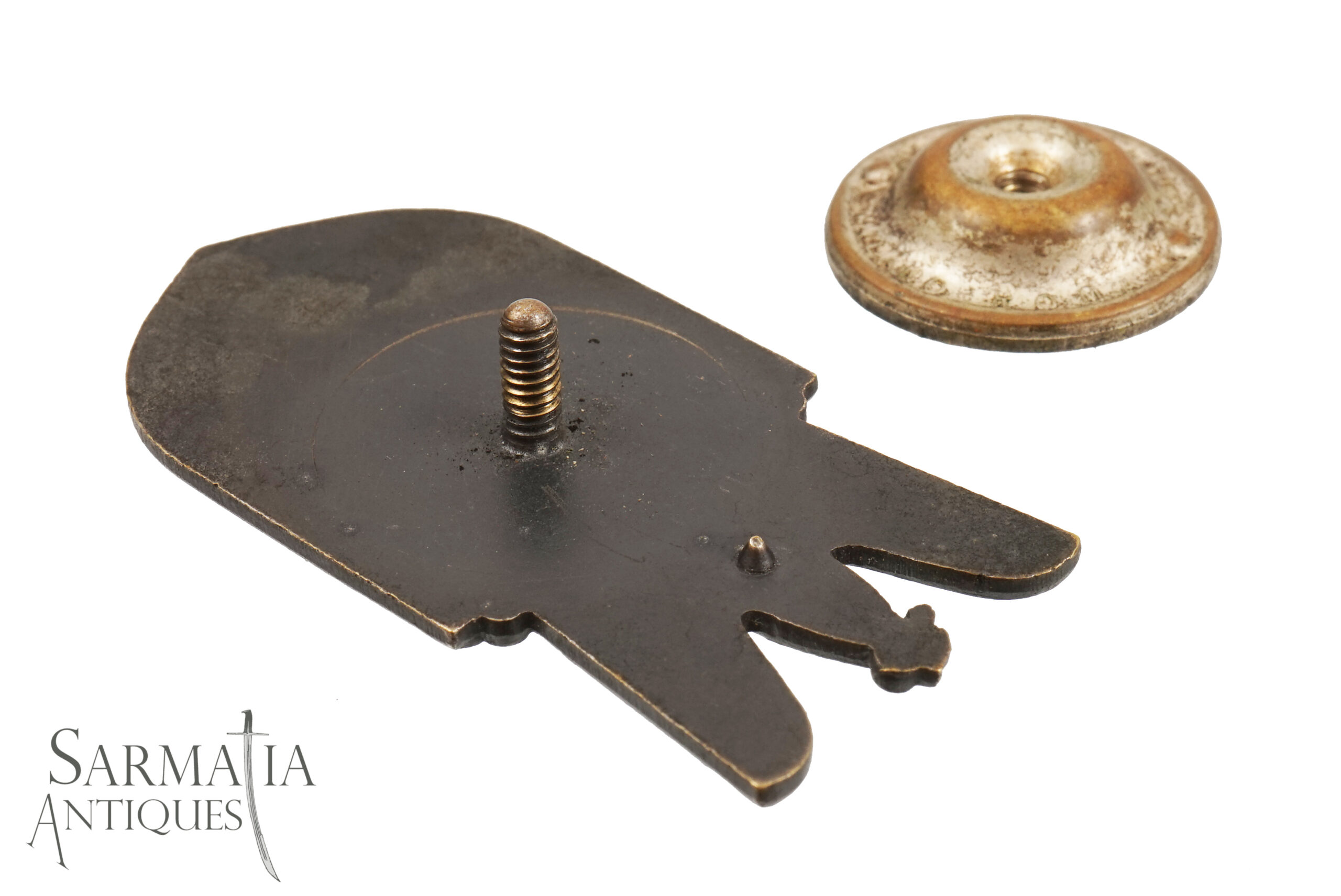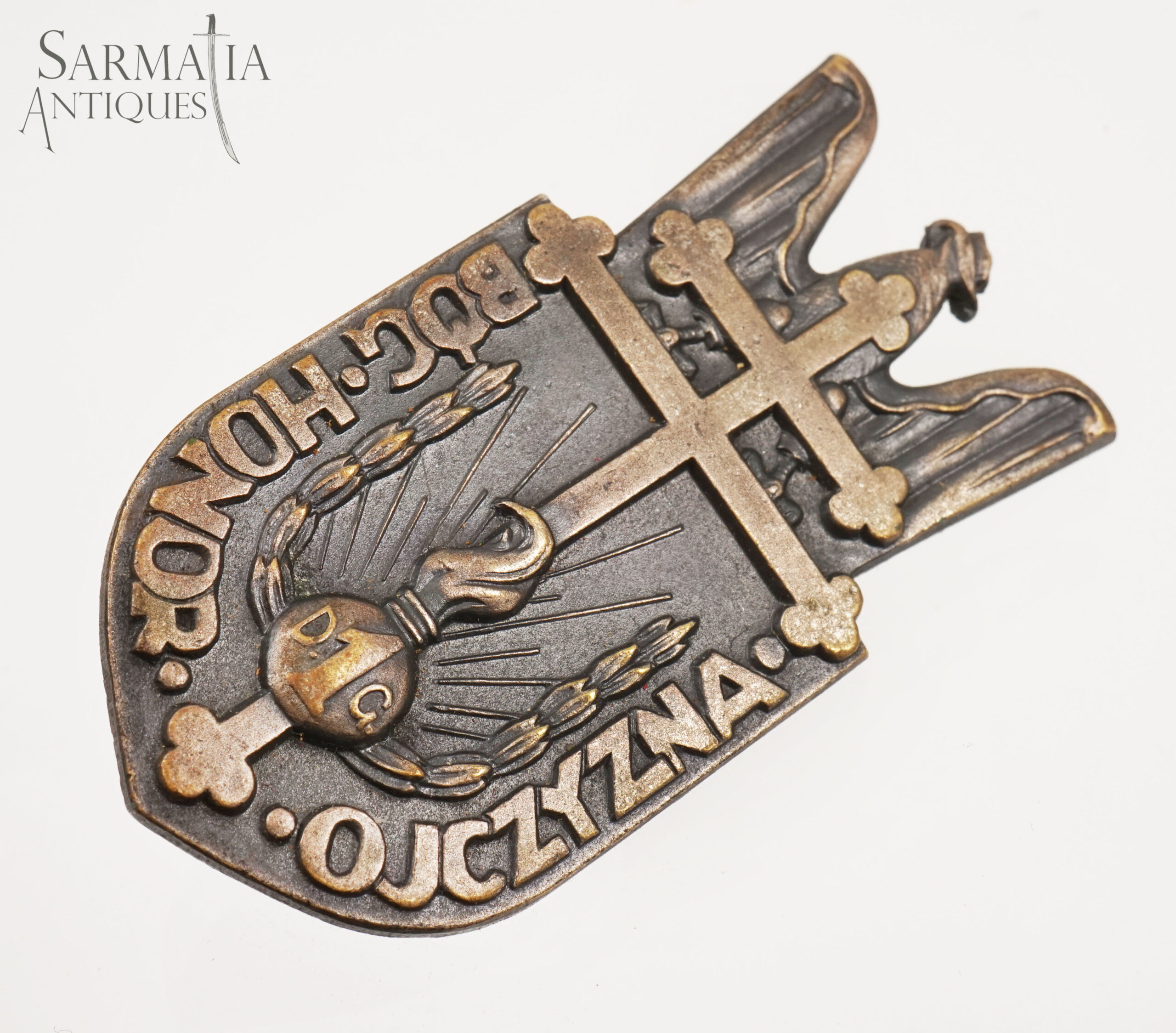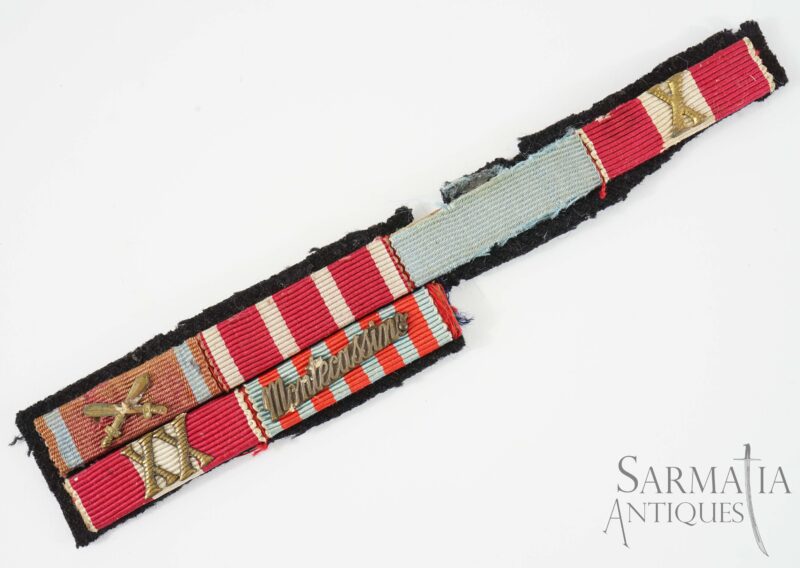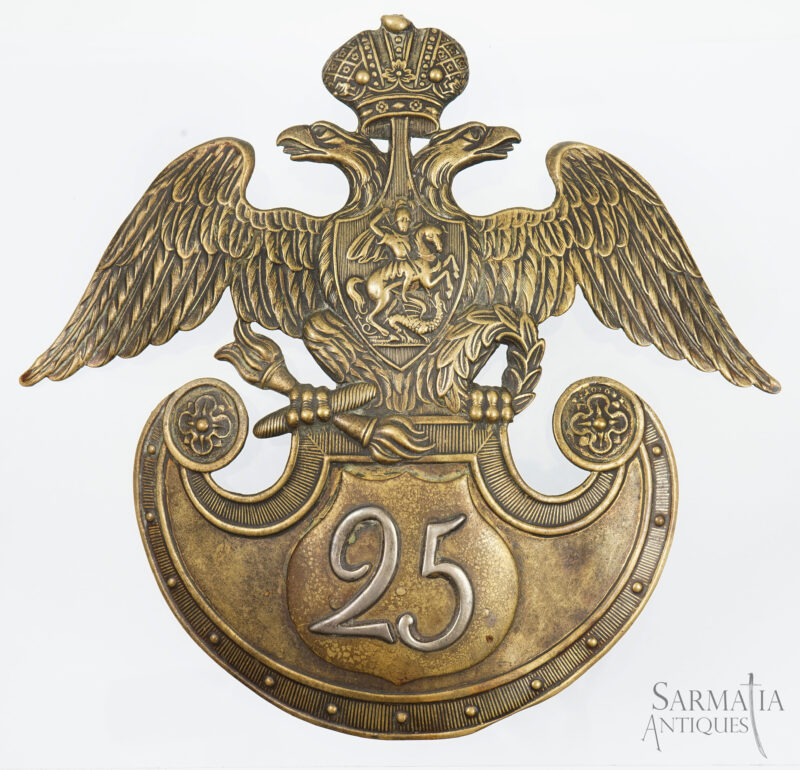
Pre-WW2 Polish Podhalański Regiment Portrait Photograph
December 16, 2021
WW2 Polish Patriotic Miniature Eagle
December 16, 2021WW2 Extremely Scarce Polish 1st Grenadier Division Combat Breast Badge – Italian Version
£1,249.99
F.M Lorioli Milan/Rome, 1946, Oxidised-Silvered Brass, 52mm x 27mm
In stock
The rarest version of the badge of the 1st Polish Grenadier Division. One of only 300 badges made in May 1946 by F.M Lorioli. A unique collectors artifact.
Badge of the 1st Grenadier Division which fought in the French Campaign of 1940. Combat version with the visible wreath.
The badge was introduced in 1943 and awarded to the members of the 1st Grenadier Division, most badges were made by Kirkwood & Son in Edinburgh, however this example is a rarer version made in Italy by F.M Lorioli.
The badge is the form of stylized crowned eagle sitting on a shield with the sentence inscribed in the circumference (God Honor the Fatherland – Bóg Honor Ojczyzna). In the lower part of the shield you can see the inscribed sign of grenadiers, a burning grenade with a number and initials (D 1 G) meaning 1 Dywizja Grenadierów (1st Grenadier Division). In the center of the shield, the Lorraine cross is visible, partially covering the eagle.
Reverse of the badge is smooth with a threaded post and a small point sticking out to prevent rotation on the uniform. Large nut screwback (22.5mm) inscribed ”F.M Lorioli Milan & Roma”.
Fantastic condition as on photographs.
This badge belonged to colonel Henryk Spaltenstein. (born 13 December 1896, died 1973). Colonel of Artillery of the Polish Army.
Born on December 13, 1896. In 1913, he graduated from the 4th grade at the C. K. Department of the Gymnasium in Stryj. After Poland regained independence, he was admitted to the Polish Army. He was promoted to the rank of infantry lieutenant with seniority on June 1, 1919. In 1923 and 1924 he was an officer of the 80th infantry regiment (Słonim garrison), including in 1923 he was assigned to the 1st Staff Division in the Command of Corps District No. III in Grodno. He was transferred to the corps of artillery officers and verified as an artillery lieutenant with seniority on June 1, 1919. In 1928 he was an officer of the 29th field artillery regiment in Grodno. On January 27, 1930, he was promoted to the rank of captain with seniority on January 1, 1930 and 3rd place in the corps of artillery officers. In 1932 he was an officer of the 5th Infantry Division in Lwów. In 1939, as a major, he served in the 19th Light Artillery Regiment in Nowa Wilejka as the commander of the 4th squadron. He fought in this position in the September campaign.
After getting to France, he became an officer of the Polish Army in France. In 1940 he was the commander of the 3rd Division of the 1st Vilnius Light Artillery Regiment. Later he became an officer of the Polish Armed Forces.
After the war, he remained in exile. In 1960 he was promoted to the rank of artillery colonel. He was a member of the Council of the Republic of Poland (in Exile) of the third term (from September 9, 1963 to July 20, 1968, on behalf of the Union of Eastern Territories), and of the fourth term (from October 8, 1969 to November 7, 1970, on behalf of the Union of Polish Socialists). He died in 1973.









